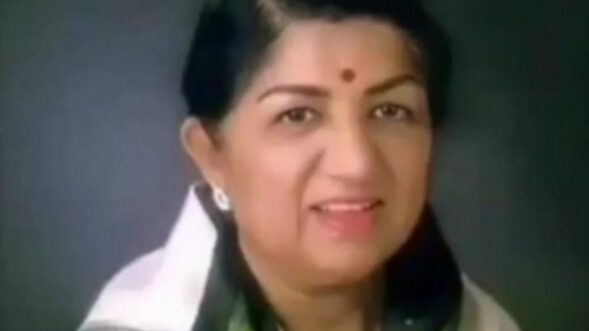
By Adity Choudhury
The 2011 film, Captain America: The First Avenger parodies the second world war in the form of Captain America serving the twin objective of boosting the morale of the American people and sugar-coating propaganda. One hilarious scene shows him walking with soldiers with the director saying, “CUT”. In another, Adolf Hitler is seen lurking on stage while Captain speaks – as the Fuhrer attacks, America is saved, with the audience, children, in particular, cheering this.
The deeper narrative here is how people looked for hope. That war and cinema share a curious connection is no secret, particularly the case during World War II.
Such is also the story of cinema in Shillong during the colonial era.
Kelvin Cinema was established in 1926 by (Rai Bahadur) Jeevan Ram Goenka – the first talkies in the entire North East. And, it took a war to shape the future of cinema in the region.
Jeevan Ram’s son, Shankar Lall Goenka, has carried the cinema legacy of his family, one of the oldest in Shillong.
HUMBLE BEGINNINGS
F.E. Unger, a government officer, sparked Jeevan Ram’s interest in the talkies. Though German, he married a Khasi woman and settled in Shillong. Their association would lead to the first cinema theatre.
A hit with the British Raj, officers and soldiers would watch English films. They would not buy tickets. A call would come from the DC office with a request to reserve 40 seats. At the end of the show, a bill would be sent to the office and it would be paid off.
Shankar Lall said, “When World War II broke out, the cinema business boomed here. Soldiers and officers would walk in with style. No one disturbed them.”
“The Governor of that time was a cinema enthusiast. A red-carpet welcome was reserved in such instances. He would sit in the middle of the aisle. This was the scene until 1942,” he added.
Indians, on the other hand, had to book tickets. A manager and a gatekeeper were hired for this purpose. Unfortunately, they could not sit where the officers watched films.
Apart from Kelvin in Shillong, there was Bijou Cinema (1932), Kelvin Guwahati (1935), a military cinema hall called Garrison Cinema, and Anjalee Cinema – all of them established by the Goenka family.
The materials for cinema were all imported, as they were not made in India then. “Kelvin Cinema, Shillong, was famous for its light and sound. One could understand each word because of the wonderful sound equipment.”
Speaking on the period of uncertainty before 1939, Shankar Lall mentioned how the cinema business was not very promising from an economic standpoint.
“For a long time, there was no response from the people here. My father, however, was optimistic that cinema would grow. Call it his vision or kismet, the war proved him right. After 1942, it picked up and by God’s grace, our fortunes grew.” he said, with a smile.
Each show was packed. There were two shows on weekends, while there was just one on weekdays. Later on, there would be three shows daily.
Despite other business ventures, cinema was the most successful and surpassed “all of them”.
With Jeevan Ram’s passing in 1950, there was a setback – Shankar Lall’s elder brothers worked hard to ensure the stability of a joint family.
THE WAY AHEAD
The responsibility fell on him to carry the cinema legacy forward.
The year was 1962. With the Indo-China War raging, he sowed the seeds of a new cinema. “We decided to build another ‘cinema-ghar’ in the cantonment ground. People mocked us and called us fools; we were concerned with films when two nations were at war. One could say it’s heartless given people were dying at the war-front.”
That seed culminated in the formation of the Anjalee cinema in 1966 – the first 70 mm theatre in North East, with Cleopatra being the first film to be screened in 1970.
Shankar Lall went to Mumbai (then Bombay) to procure the projector and the seats and met people related to the business. Other materials, including packets of chips, came from Calcutta, as they were not available in Guwahati.
English films were always a rage, followed by Hindi films, while a few watched Bengali films. Kelvin was known for English and Bengali films – the five pm show was for the latter, with the remaining two meant for English films.
A sizeable section who loved Hindi cinema flocked to Bijou Cinema. Garrison cinema, on the other hand, had a mixed crowd.
“There was this interesting division between Khasi people – half preferred Hindi films and were our loyal customers in Bijou; the remaining loved Hollywood and would come to Kelvin,” Shankar Lall added.
On the projectors before 70 mm, he shared that Kelvin was the first cinemascope theatre in Shillong. “Ask any senior resident of the city, he/she will tell you they used to watch many films here. People from Jowai would watch films here. Such was the popularity.”
Initially, there were two shows, one at 2 pm and the other, at 5 pm. The latter ran for seven days a week, and two matinee shows were reserved for Saturday and Sunday.
Sharing an interesting anecdote, he said, “Every week, our father would give us Rs 1 for overtime. Now it seems like nothing, but back then, we would eagerly wait for this so that we could spend it.”
PRACTICAL LESSONS
Anjalee Cinema left a lasting impression. The audience who loved English films responded enthusiastically. Smiling, he said, “Would you believe if I told you there was no atmosphere of fear back then in Shillong? People… our customers, would walk to Nongthymmai at 10 or 11 pm.”
Till 1958, his family was into the exhibition of films. Shankar Lall was the first in his family to venture into the distribution sector in 1960 and distributed Hindi, Assamese, and English films.
The 1980s were a turning point for him. Now, a producer, he shared, “I am the first person in my family to produce Assamese cinema in 1981. Notable among them is Manasi.”
In 2013, he started his own production house, Shiven Art.
To date, three films produced by him won three national awards – the first, Ajeyo (2013), was directed by Jahnu Barua; the second, a Bodo film, titled, Dau Huduni Methai (The Song of Horned Owl) by Manju Bora in 2015; and the third for the Pradip Kurbah directed Iewduh (The Market) in 2019.
Iewduh, in particular, is very special for Shankar Lall. “My first Khasi film not only won the national award but he (Kurbah) won the award for best director at the Busan International Film Festival. This is a big thing for me as a producer.”
The question remains – why remain in the North East when Shankar Lall could’ve gone to Bombay?
Recalling his elder brother’s role, he said, “He was a very strict administrator. There was no room for impulsive decisions. We could not go to Bombay on a whim. I went there in 1965 during the construction of Anjalee Cinema and saw the sea for the first time.”
THE PRESENT
Highlighting the importance of theatres, Shankar Lall emphasised the importance of a film policy.
“Just announcing is not enough. Make cinemas across the state – in Jowai, Nongpoh and Nongstoin, among others. Why should Khasi films be screened only in Shillong? This is a long-run investment and the revenue generated will help the people. It’s an industry, therefore, not a matter of joke. The amount decided is a reasonable sum of money and should not be misused…
… Entrepreneurs interested in film policy should step forward and invest in cinemas. New cinemas will increase the standard of Khasi cinema. There is so much talent here, one needs to tap into its potential for growth. Look at Assamese cinema today – they’re spoken about and hailed internationally. A good film will always have an audience, nationally and internationally. Iewduh proved that.”
REMINISCING
While Kelvin Guwahati is in a transformative period and will keep cinema enthusiasts entertained in the form of either Kelvin Gold or Kelvin PVR soon, Kelvin Shillong now lives in the memory of the people of Shillong, thanks to the fire that destroyed the theatre.
Buildings may fade, but what remains is collective memory and dreams that transform spaces.
The octogenarian producer, who was born in 1935, remembered how a small idea paved the way for cinema to grow in the North East. “I was too small then to see what my father did. It didn’t even cross my mind to ask him questions or that I would carry his legacy forward.”
As the conversation came to a close, Shankar Lall mentioned two of his favourite films: The Sound of Music and Mehboob Khan’s Andaz.
His parting words, “We all need entertainment to escape from reality. Earlier, there were different theatre traditions that bonded communities. Cinema makes us forget our sadness, even if it’s for a few hours. Even during wartime, people needed some respite.”






